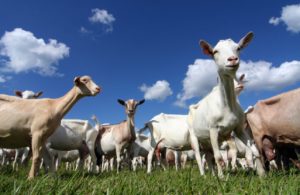Wool is a natural material that is frequently used to make clothing. Shearing fleece (hair) from sheep and other animals yields wool. Wool is also gathered from different species, including cashmere goats, angora rabbits, yaks, llamas, and alpaca camels. Animals are raised to produce wool fibre.
1. Making woollen Yarns and clothes
Wool is the best material for premium carpets. You may probably discover it by digging down to the padding underneath. Wool of inferior quality and yarn scraps are not wasted. Instead, they are extensively used as industrial underlays.
2. Manufacturing carpets
Durable wool carpets can survive ripping, are simple to maintain, and bear furniture indentations. Additionally, wool is used to create a variety of garments, including upscale suits (coats and trousers). Wool is used for making cardigans, sweaters, fleece clothing, socks, and undergarments. Wool is used for making shirts and t-shirts.

3. Making fire-resistant materials.
Merino wool has long been a favoured material for firefighters’ clothing due to its 600 °F fire retardancy. High temperatures do not cause it to melt, shrink, or stick to the skin. It also does not emit any hazardous scents. It’s a safe choice for wool as a fire retardant. Wool naturally resists fire; therefore, it doesn’t require chemical treatment to meet fire safety regulations.
4. Manufacture of cosmetics and shampoo
Wool has less waste. The by-product, lanolin, is used in many products, including shampoos, cosmetics, automotive lubricants, and sticky tape.
5. Used in construction to strengthen bricks
Bricks are strengthened using a wool and seaweed combination, making them stronger and considerably more ecologically friendly. Boxes with wool insulation are made from leftover wool. Furthermore, substantial oil spills have been successfully absorbed by wool.
6. Manufacture of fertilizers
Although you would not think to use wool in the garden, it also has its place. Wool makes an excellent mulch since it is biodegradable and absorbent. Wool mulch pads offer a natural substitute for synthetic mulches.
7. Used as a wall insulator during the cold season
Buildings are kept warm and silent by the wool in our walls. The worldwide use of natural wool insulation makes it an eco-friendly acoustic and thermal choice. All insulation has an R-value, which measures heat resistance, and wool insulation performs better than its R-value rating because of its capacity to absorb and release moisture. Since they don’t need to wear any safety gear when working with this natural substance, installers can also choose this alternative.
8. Manufacturing Bedding
Compared to other fillings, wool-filled duvets promote better sleep. That is the conclusion reached as a result of research carried out by the University of Leeds under contract with The Wool Room. Less overheating results from the temperature-regulating properties, leading to a more peaceful sleep. Additionally, its hypoallergenic qualities are excellent for people with allergies and asthma.
9. Manufacturing Activewear garments
Merino wool is a high-performance fibre. Circular knits produce seamless clothing that lessens chafing. Odours are suppressed by the material’s ability to control moisture and temperature.



